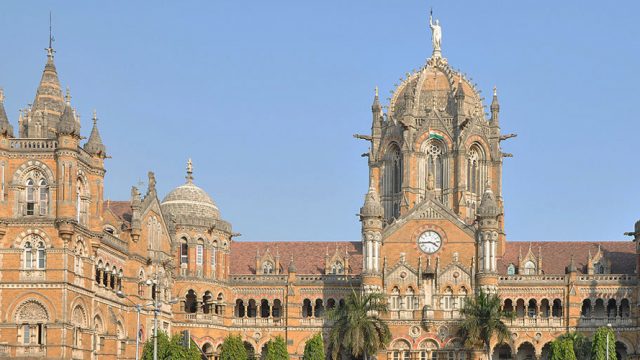Mumbai is full of iconic buildings. In fact, the entire character of the megapolis, as a city that never sleeps, is in part defined by the magnificent architecture. The stylistic range of the buildings are stunning, ranging from the Gothic to the Greek.
We all know Victoria Terminus (now CST), Flora Fountain, Gateway of India and Crawford Market, to name just a few. But do you know who built these grand edifices? Read on to find out about the amazing architects to whom we owe the international, cosmopolitan character of “amchi Mumbai.”

Sir George Gilbert Scott
Gave Mumbai the French-style University of Mumbai near the old Bombay Secretariat (1868-78). The Rajabai Clock Tower here used to play Rule Britannia and God Save the King.
Col James Augustus Fuller
Bestowed Mumbai with the Gothic High Court (1871-79), which includes a central tower crowned by figures of Justice and Mercy. Also built the Mechanic’s Institute (former David Sassoon Library), in 1870.
Major John Hawkins
Gave shape to the Mint, built on the old Fort’s rubbish dump (1824-29).
Thomas Cowper
Designed the Town Hall (1820-23), whose Ionic columns are said to be inspired by a Greek temple. Now, it houses the Bombay Asiatic Society.

William Emerson
Is credited with designing the Crawford Market (1865-71). Rudyard Kipling’s father, Lockwood Kipling’s friezes can still be seen here.
Sir Bartle Frere & James Trubshaw
In 1867, Bartle Frere commissioned Mumbai’s pioneering cast iron structure, the Watson’s Hotel (it was the venue of the Lumiere Brothers’ first screening in Mumbai, and is now an office warren), which was designed by James Trubshaw. It steered the way for the making of the Esplanade.
The Parsis
Many famous buildings in Mumbai, especially educational institutions such as the JJ School of Art, Fort (where writer Rudyard Kipling was born), were the result of Parsi benevolence. Incidentally, Hafeez Contractor to whom present-day Mumbai owes much of its cookie-cutterish designs like the decade-old Hiranandani Gardens at Powai, is also a Parsi.

Frederick W. Stevens
Built the Victoria Terminus (now the World Heritage monument of CST) and Churchgate between 1878 and 1888 for the Great Indian Peninsular Railway at the cost of Rs 18 lakh. Byzantine in character, the terminus is constructed of rough hewn basalt stone inlaid with red Bassein sandstone. On its western gable, look for a locomotive and wheel, symbols of Western progress. Stevens’ first major contribution to Mumbai was the Royal Sailor’s Home (1876), now the Maharashtra Police Headquarters.
James Forsyth
The sculptor of Flora Fountain (1869), situated at the heart of Mumbai’s Fort area. It includes the modern addition of a martyr’s square, Hutatma Chowk, in memory of those who fought for the creation of Maharashtra state.
George Wittet
Was the man behind the Gateway of India (1927) built to commemorate the visit of George V and Queen Mary in 1911. Wittet also created the masterplan for Mumbai’s first business district, the quiet and beautiful Ballard Estate. To him Mumbai also owes the Gujarat-inspired Prince of Wales Museum (now renamed after Shivaji), the Renaissance- style Institute of Science (Madame Cama Road) started in 1911, and the General Post Office in Fort.




